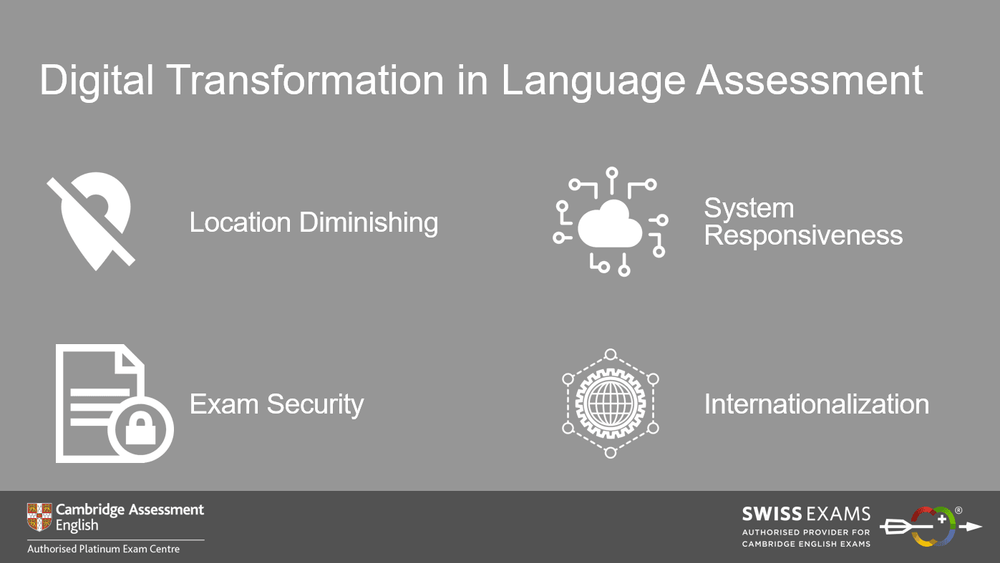First, through the opportunities provided by technological advances, we have seen that the importance of location has changed. Concepts where teachers are sent to companies have almost vanished. So to speak, “the flying teacher” was grounded because the internet allows us to overcome these distances in a faster and much more cost-effective way today. Companies, such as Speexx, provide high-end communication training across the globe via the internet in a much more scalable way. But not only in teaching did things change, also in assessment. When BULATS, the Business Language Testing Service, went online in 2008, sales increased by over 100% in three years. Today, systems which allow to remote proctor students during exams are heavily discussed and are on the advance.
Second, we have also seen a move towards learning and assessment organisations using responsive technology. Even though already dated, Computer Adaptive Testing (CAT) is a technology still employed today. The Cambridge English Placement Test, for example, assesses the learners’ levels by adapting the questions posed to the previous answer given, hereby increasing the accuracy of the results. Artificial Intelligence, known as AI, employs algorithms which teach themselves, based on the response or behaviour of the tester or learner. Cambridge Linguaskill is the first global language test which employs AI in the auto-marking of the speaking and the writing test to generate reliable results.
Third, exam security is one of the biggest headaches of exam boards and centres alike. However, also here technology can help. Cheating detection software, bio-data collection of candidates or video monitoring are just a few new technologies which help to guarantee exam security and exam integrity, certificate recognition and, finally, the learners’ real proven ability. On the other hand, in exam rooms, technological devices need to be neutralised. Swiss Exams uses a so called “dead zone" bag which allows candidates to stay in possession of the device. Candidates’ devices are securely stored in the bag yet all outside communication is cut off.
Fourth, the entire exam business has become even more international than in the past. Exam delivery via the internet has broken down geographical and political boarders, benefiting logistics, reducing cost and speeding up processes providing a much quicker turn-around of results. Seminars for teachers are called webinars and meetings between centres and exam boards are held via Skype or Teams.
To sum up, how can students, teachers, schools, exam providers and companies benefit from the technology? The list is endless, however, a good way to summarise it is: while students benefit from an easy and guided registration process, schools can monitor the process in real time. Teachers can attend teacher training webinars and guide students through performance monitoring systems. Exam centres can offer full online, remote proctored and auto-marked learning and assessment to companies, reducing logistics and costs while increasing efficiency and flexibility in language learning and assessment.
If you are interested in learning more about the technologies mentioned in this article, please contact us: info@swiss-exams.ch

